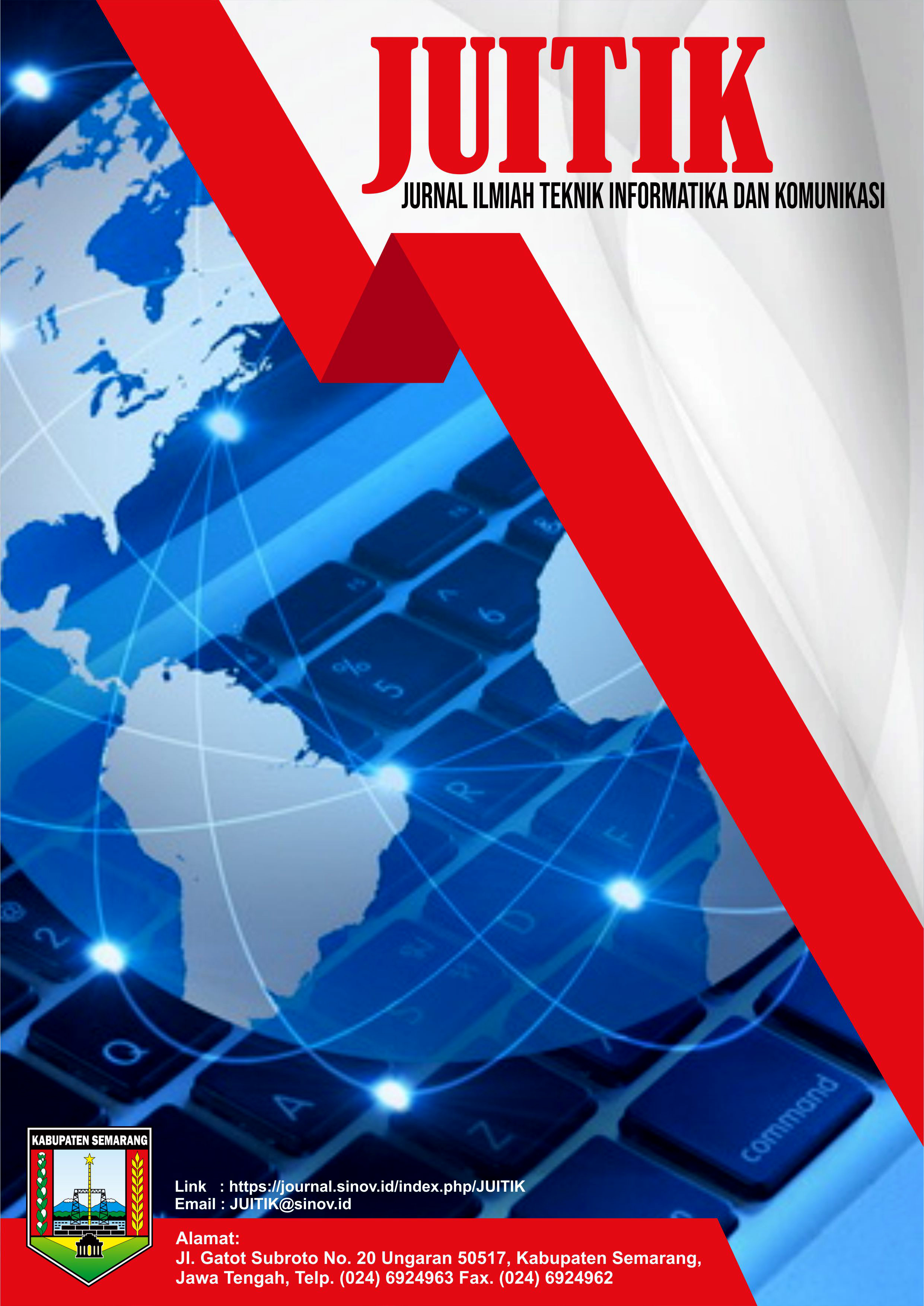Prediksi Risiko Obesitas Remaja Berdasarkan Pola Makan dan Aktivitas Fisik Menggunakan Algoritma Random Forest
DOI:
https://doi.org/10.55606/juitik.v5i1.1264Keywords:
Adolescent Obesity, Dietary Patterns, Physical Activity, Risk Prediction, Random Forest, Machine Learning, Data MiningAbstract
Obesity in adolescents is a growing public health concern due to its association with various chronic diseases such as type 2 diabetes, hypertension, and metabolic disorders. This study aims to develop an obesity risk prediction system for adolescents based on dietary patterns and physical activity data using the Random Forest algorithm. The data was obtained from a secondary dataset available on the Kaggle platform, comprising 2,111 entries and 17 features covering dietary habits, physical activity, and anthropometric characteristics. The Random Forest method was chosen for its ability to handle high-dimensional data and produce accurate classifications. The developed system is a console-based application where users can input their lifestyle data and receive obesity risk predictions in three levels: low, moderate, and high. Model performance evaluation showed excellent results with an accuracy of 95%, as well as consistently high precision, recall, and F1-score values. Compared to other algorithms such as KNN and Decision Tree, Random Forest demonstrated competitive and stable performance. The results of this study are expected to be utilized as an educational and preventive tool for early detection of obesity risk in adolescents.
References
(n.d.). Introduction of Random Forest Classifier to ZigBee Device Network Security. Retrieved June 14, 2025, JSTOR database.https://www.jstor.org/stable/26487106
Alpiansah, A. B., & Ramdhani, Y. (2023). Optimasi fitur dengan forward selection pada estimasi tingkat obesitas menggunakan Random Forest. Sistemasi: Jurnal Sistem Informasi, 12(3), 860–873. https://doi.org/10.30736/sistemasi.v12i3.860
Badan Kebijakan Kesehatan Kementerian Kesehatan RI. (n.d.). Laporan hasil survei. https://www.badankebijakan.kemkes.go.id/laporan-hasil-survei/
GeeksforGeeks. (2024, February 15). What are the advantages and disadvantages of Random Forest?. GeeksforGeeks. June 14, 2025 https://www.geeksforgeeks.org/what-are-the-advantages-and-disadvantages-of-random-forest/
Global Observatory for Physical Activity. (n.d.). Country cards. https://new.globalphysicalactivityobservatory.com/
Hafid, W., & Hanafi, S. (2019). Hubungan aktivitas fisik dan konsumsi fast food dengan kejadian obesitas pada remaja. Kampurui Jurnal Kesehatan Masyarakat, 1(1), 6–10.
Journal of Medical Systems. (n.d.). Journal of Medical Systems. June 14, 2025 https://link.springer.com/journal/10916
Jurnal Akuntansi dan Keuangan. (n.d.). Jurnal Akuntansi dan Keuangan. 14 Juni 2025, dari https://www.jahonline.org/
Kurdanti, W., Suryani, I., Syamsiatun, N. H., Siwi, L. P., Adityanti, M. M., Mustikaningsih, D., & Sholihah, K. I. (2015). Faktor-faktor yang mempengaruhi kejadian obesitas pada remaja. Jurnal Gizi Klinik Indonesia, 11(4), 179–190. https://doi.org/10.22146/ijcn.22894
Muchlinski, D., Siroky, D., He, J., & Kocher, M. (2016). Comparing random forest with logistic regression for predicting class imbalanced civil war onset data. Political Analysis, 24(1), 87–103. https://doi.org/10.1093/pan/mpv024
Rifaldi, A., Anang, L., & Satrio, I. D. (2022). Implementasi algoritma k-nearest neighbor (KNN), Random Forest, Naive Bayes dan Decision Tree untuk mengklasifikasikan tingkat obesitas. RG Journal of Applied Science, 2(2). https://doi.org/10.31219/osf.io/rg456
Salam, A. (2010). Faktor risiko kejadian obesitas pada remaja [Undergraduate thesis, Universitas Hasanuddin].Siloam Hospitals. (n.d.). Apa itu obesitas? Siloam Hospitals. https://www.siloamhospitals.com/informasi-siloam/artikel/apa-itu-obesitas
Scornet, E., Biau, G., & Vert, J.-P. (2015). Consistency of random forests. The Annals of Statistics, 43(4), 1716–1741. https://doi.org/10.1214/15-AOS1321
Scornet, E., Biau, G., & Vert, J.-P. (2015). Consistency of random forests. The Annals of Statistics, 43(4), 1716–1741. https://www.jstor.org/stable/43556658
Shi, T., & Horvath, S. (2006). Unsupervised learning with random forest predictors. Journal of Computational and Graphical Statistics, 15(1), 118–138. doi:10.1198/106186006X94072 https://www.jstor.org/stable/27594168
UNICEF Indonesia. (2022). Analisis lanskap kelebihan berat badan dan obesitas di Indonesia. United Nations Children’s Fund. https://www.unicef.org/indonesia/media/15581/file/AnalisisLanskapKelebihanBeratBadandanObesitasdiIndonesia.pdf
Universitas Sumatera Utara. (2022). Faktor-faktor yang berhubungan dengan obesitas pada remaja di SMA Negeri 5 Medan Tahun 2022 [Undergraduate thesis, Universitas Sumatera Utara]. Repositori USU. https://repositori.usu.ac.id/handle/123456789/43496
World Health Organization. (2023). Obesity and overweight. https://www.who.int/news-room/fact-sheets/detail/obesity-and-overweight.
Downloads
Published
How to Cite
Issue
Section
License
Copyright (c) 2025 Jurnal Ilmiah Teknik Informatika dan Komunikasi

This work is licensed under a Creative Commons Attribution-ShareAlike 4.0 International License.










